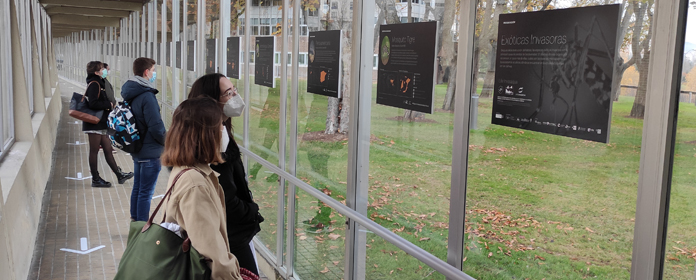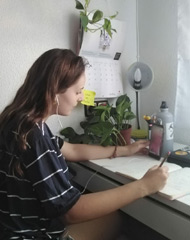Mimicking tuna to build more efficient buildings
A team of architects and biologists from the University of Navarra confirms that this strategy would reduce heat demand by up to 5%.

(Click on the image to enlarge)
A group of researchers from the Schools of Science and Architecture of the University of Navarra has published a study of Biomimicry -discipline that translates the adaptations of animals to practical applications for people - on the benefits of mimicking the distribution of the vital functions of tuna to optimize the work areas in an office building.
The article, published in Building Simulation magazine, proposes a space zoning of work that places meeting rooms and offices with high occupancy in the center of the building, while the open work areas are located in the outer zone, with the goal to reduce heating demand.
"This is exactly what the tuna achieves by locating its vital functions in the center of its body. This fish concentrates its nervous, respiratory and digestive systems there, as well as the set of red muscles that give it that particular reddish hue and ensure that the heat generated is kept inside. Thus, it can survive in icy waters - up to 4 ºC - where other animals of its size would not maintain such high activity", explains Rafael Miranda, professor at department of Environmental Biology.
In addition to this peculiarity of its Anatomy is the rete mirabile, a complex network of veins and arteries that run through the body of these fish from the center to the periphery, oxygenating the body with minimal heat loss. "When applied to architecture, it can also help us to consider how to make the ventilation of buildings in the most effective and sustainable way," adds Rafael Miranda.
A more efficient system the colder it getsAmaia Zuazua, architect and researcher at project in the School of Architecture of the academic center, adds that the main novelty of this study is to use nature as a learning source to improve the energy management of a building. And the results, as she points out, have left no room for doubt: "The data indicate a reduction in heating demand in all cases. In particular, the models indicate that the colder the climate, the more the need for heating is reduced by applying the 'building tuna' model ."
In this regard, simulations with cities such as Berlin, Oslo or Pamplona indicate a reduction average demand of 5%. And all this, emphasizes the architect, with a modification that does not involve a structural change of the building, but a change in the distribution of the areas of work: "The most interesting thing about our proposal is that it hardly requires expenses. We are not talking about changing façades or renovating large facilities, but rather about changing the interior layout.
For their study, architects and biologists from the University of Navarra used as model the Gamesa building in Pamplona, whose central distribution would resemble the Anatomy of the tuna. Also, the project has received the award to the redesign of the integration of energy in buildings from animal metabolisms (project RIMA), awarded at the XIII Spanish Biennial of Architecture and Urbanism. The work has been funded by the Ministry of Economics and Competitiveness.





